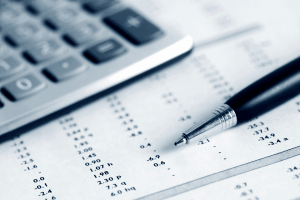Wave: Small Business Software Wave Financial
Check out our piece on the best free payroll software for small-business owners. With TrulySmall Invoices, you can send invoices and estimates, accept digital payments and send automatic reminders and invoice status updates via a desktop platform or mobile app. Sage is https://thewashingtondigest.com/navigating-financial-growth-leveraging-bookkeeping-and-accounting-services-for-startups/ a UK company that has been producing accounting software for the best part of four decades. Founded in 1981, its latest offering – Sage Business Cloud Accounting – is a cloud-based accounting solution that’s perfect for businesses large, small, and anywhere in between.
Comprehensive features
This plan is limited to 50 billable clients, but FreshBooks makes clear that this limit applies to active and archived clients, and that old clients can be deleted to make space. You will also still see the info for deleted clients, and deleted clients can be undeleted later. Sign up to receive more well-researched small business articles and topics in your inbox, personalized for you. When you log into your account, you’ll see a traditional dashboard with a workflow diagram.
ZipBooks – Best for Large Feature Catalog
Sage is also offering 3 months free on all its Business Cloud Accounting packages, as well as a 30-day free trial so you can see if it’s right for your business. If you have more than 50 clients, then you’ll need the Premium plan. This costs £35+VAT per month, and supports up to 500 billable clients. At the time of writing, QuickBooks is offering these plans for 90% off for 1 year.
Customer portal
With Wave, you can track income and expenses, send invoices, track sales tax and create reports. Run multiple businesses from the same account, check your dashboard to see how business is doing and collaborate with unlimited https://marylanddigest.com/navigating-financial-growth-leveraging-bookkeeping-and-accounting-services-for-startups/ partners and accountants. Accounting software is a way for businesses to track income and expenses, send invoices, track sales tax and create reports. Some accounting software can also help track mileage or offer payroll.
- As this piece has explained, all free accounting software comes with compromises.
- The simplest bookkeeping software to use is Zoho Invoice, an extremely user-friendly invoice, billing, and completely free online bookkeeping software.
- You’ll also be able to add unlimited income tracking, expense tracking, and guest collaborators for free.
- If you need a relatively short-term bookkeeping solution with a reasonable upgrade fee, Sunrise’s free plan is worth checking out.
- Some free accounting solutions make that process more convoluted and frustrating than others — bear that in mind when you pick your preferred platform.
When Should You Use Paid Software?
Plan for that process ahead of time by leveraging a program that will let you seamlessly export and migrate those existing records to a paid platform. But apart from those issues, accounting services for startups Zoho Books is a pretty sound application. If its suite of features covers your needs and your business meets its revenue requirements, consider looking into Zoho Books’ free plan.
“My overall experience with Zoho Books has been awesome! My business has saved money and now has an accounting platform that is much more suited to our needs and offers more features than our previous platform.” Zoho Books integrates with various payment gateways to let you collect payments online, hassle-free. We built our payroll tool for small business owners, so it’s easy to use AND teaches you as you go. Give your customers the option of paying with one click using a credit card, bank transfer, or Apple Pay.


